Have you ever noticed a few hairs on your pillow when you wake up or in your brush after styling? This daily hair loss, far from concerning, is an integral part of the hair growth cycle. Each day, we naturally lose between 50 and 100 hairs, a perfectly normal phenomenon that reflects the constant renewal of our hair.

Understanding the hair growth cycle is fundamental to comprehending your hair’s health, particularly if you’re experiencing increased hair loss or considering treatments such as a hair transplant in Turkey. With approximately 5 million hair follicles distributed across our body, this complex system deserves attention to demystify how it functions.
Hair Anatomy: A More Complex Structure Than It Appears
Before discussing the hair growth cycle, it’s essential to understand its composition. Far from being a simple fibre, hair possesses a sophisticated architecture divided into several parts.
The Hair Structure Revealed
Each hair comprises two main parts: the visible portion, called the hair shaft, and the part hidden beneath the skin, the root. At the end of this root is the hair bulb, the true production factory of the hair.
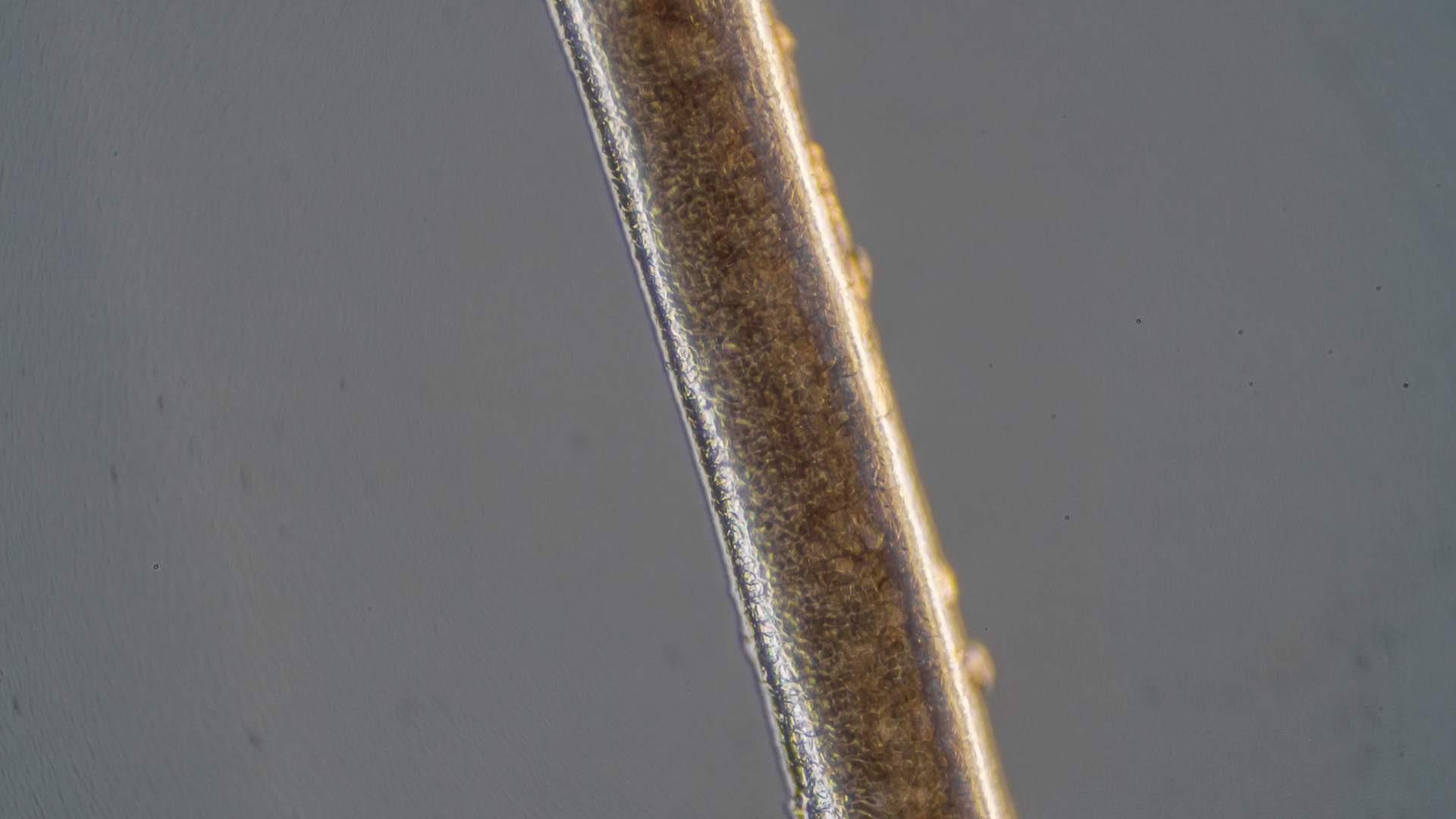
The hair shaft itself consists of three concentric layers:
- The cuticle, a protective outer layer formed of overlapping scales similar to roof tiles
- The cortex, the intermediate layer containing melanin responsible for hair colour
- The medulla, a central core present in particularly thick hairs
This layered structure explains why your hair can appear shiny or dull: when the cuticle scales are smooth and aligned, they reflect light harmoniously, creating that sought-after shine.
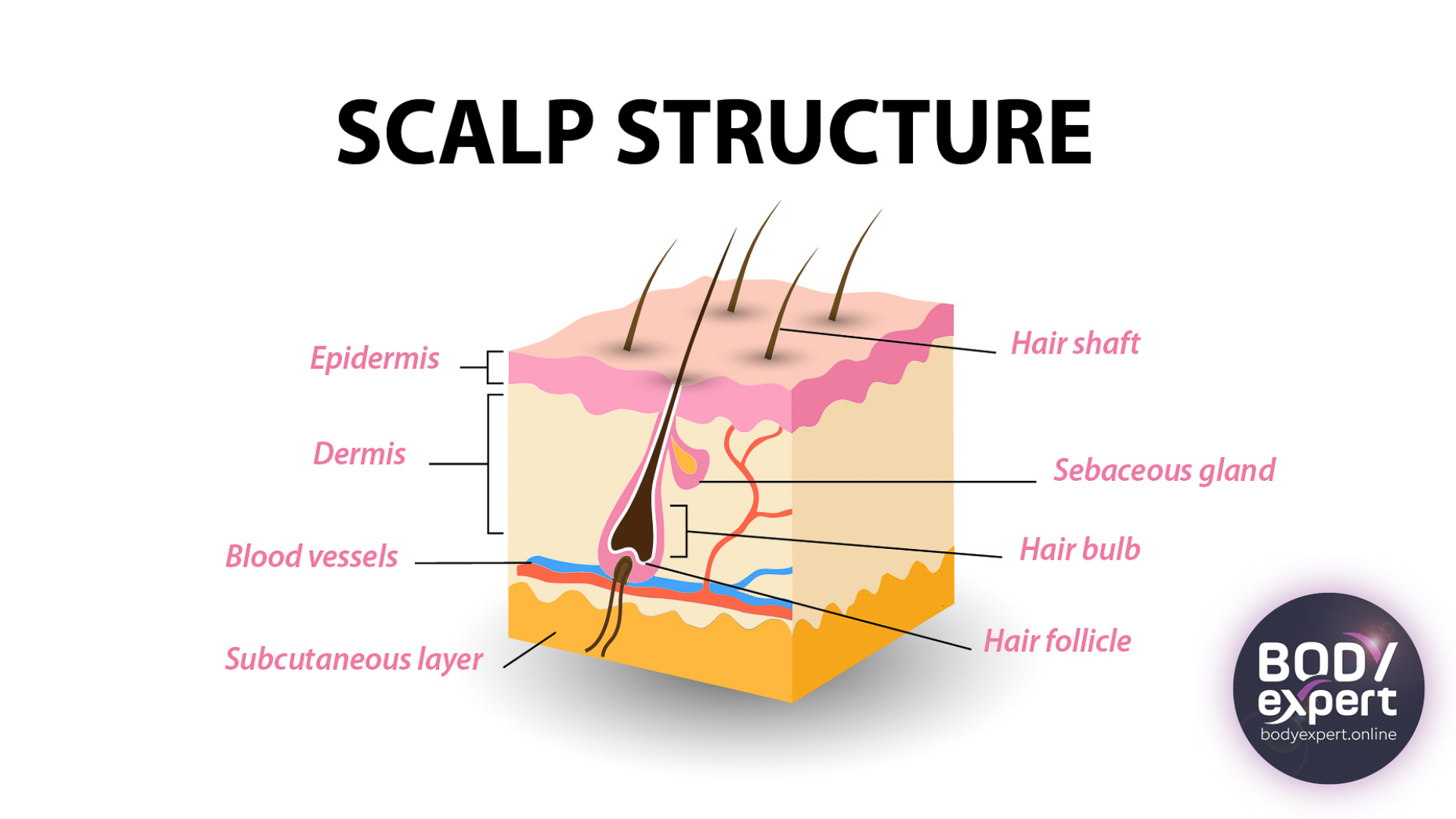
The Hair Follicle: The Cradle of Hair
A true miniature organ embedded in the skin, the hair follicle is the root of the entire hair system. It consists of several elements:
- The epithelial sheath (external and internal) which surrounds and protects the growing hair
- The richly vascularised dermal papilla that nourishes the bulb
- The sebaceous glands that produce sebum to lubricate and protect the hair and scalp
The follicle also contains an area called the bulge, a reservoir of precious stem cells that play a crucial role in hair renewal. During a DHI hair transplant, these complete follicles are carefully extracted to ensure optimal graft survival.
The Three Phases of the Hair Cycle: The Secret Life of Your Hair
A hair’s life cycle is a fascinating process that occurs independently for each follicle. This desynchronisation explains why we don’t lose all our hair at once, but rather progressively and continuously.
The Anagen Phase: Period of Active Growth
The anagen phase represents the period of active hair growth. During this phase, which typically lasts between 2 and 6 years for scalp hair, the bulb cells divide rapidly, producing the keratin that forms the hair shaft. At any given time, approximately 80 to 90% of your hair is in this phase. During this period, your hair grows about 1 cm per month. The longer this phase, the longer your hair can potentially grow.
Several factors can influence the duration of this phase: genetics of course, but also diet, stress, and hormones. In people suffering from androgenetic alopecia, this phase tends to shorten progressively, leading to finer and shorter hair over time.

The Catagen Phase: Transition and Slowdown
Next comes the catagen phase, a relatively short transition period lasting approximately 2 to 3 weeks. During this phase, melanin production stops and the follicle retracts. The hair gradually detaches from the dermal papilla and begins to form what is called a “club hair”.
Only 1 to 2% of your hair is in this phase at any given time. It’s a preparation period for the resting phase, where the metabolic activity of the follicle slows down considerably.
The Telogen Phase: Rest and Renewal
The final stage of the cycle is the telogen phase, a period of complete rest that typically lasts between 2 and 4 months. The follicle is then totally dormant, and the hair, although detached from its nutritive source, remains anchored in the follicle. Approximately 10 to 15% of your hair is in this phase at any given time. At the end of this period, the follicle reactivates, a new hair begins to grow and eventually pushes out the old one. This phenomenon explains the natural daily hair loss we experience.
To better understand, imagine each hair follicle functioning like a small factory that alternates between periods of intense activity (anagen), slowdown (catagen) and temporary shutdown (telogen) before starting a new cycle.
Factors That Influence the Hair Growth Cycle
Many elements can disrupt or modify the natural cycle of your hair, affecting its growth, appearance and general health.
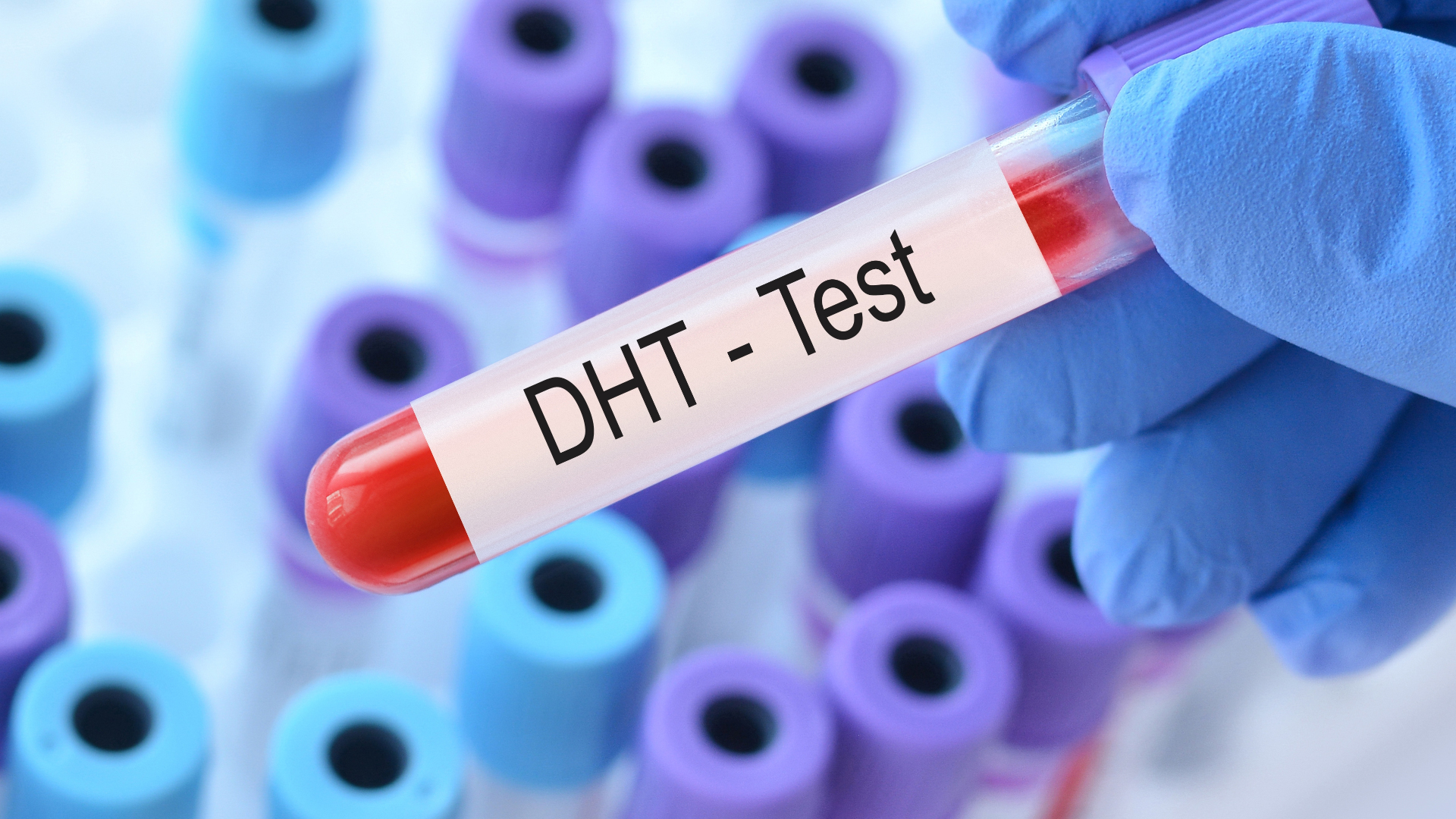
The Influence of Hormones on Your Hair
Hormones play a predominant role in regulating the hair cycle. Dihydrotestosterone (DHT), derived from testosterone, is particularly involved in androgenetic alopecia. It acts on sensitive follicles, progressively shortening their anagen phase.
In women, hormonal fluctuations related to pregnancy can temporarily modify the cycle. During pregnancy, the proportion of hair in the anagen phase increases, giving the impression of fuller hair. After childbirth, a return to normal often causes more significant temporary shedding, a phenomenon known as postpartum telogen effluvium.
Thyroid hormones also influence the hair cycle. A thyroid imbalance can accelerate or slow down hair renewal, causing thinning or excessive shedding.

Genetic Inheritance: What Your Parents Have Passed On
Genetics determines many characteristics of your hair: its colour, texture, density, but also the duration of each phase of the hair cycle and the sensitivity of your follicles to hormones.
If your parents suffered from androgenetic alopecia, you’re more likely to be affected as well. Genetic predisposition doesn’t mean inevitability, but it’s an important factor to consider, particularly if you’re contemplating a FUE hair transplant.

Diet and General Health: The Fuel for Your Hair
Hair, although composed of dead cells once it emerges from the scalp, is produced by very much alive follicles that require specific nutrients to function properly.
Deficiencies in iron, zinc, B vitamins (particularly biotin), proteins or essential fatty acids can disrupt the hair cycle, shortening the anagen phase and precipitating hair loss.
Chronic stress can also upset the normal hair cycle. In situations of intense stress, the body may redirect its resources towards vital functions at the expense of hair growth, sometimes causing telogen effluvium, a temporary excessive shedding.

Environment and Hair Care: External Aggressions
Environmental factors such as UV exposure, pollution or climate variations can also affect the health of your follicles and therefore the hair cycle. Similarly, overly aggressive hair care (frequent colouring, chemical straightening, excessive heat from styling tools) weakens the hair fibre and can eventually damage the follicle.
When the Cycle Goes Awry: Understanding Hair Problems
When the normal hair cycle is disrupted, various hair problems can occur, ranging from simple temporary shedding to more permanent alopecia.
Androgenetic Alopecia: When Follicles Shrink
Androgenetic alopecia, or common baldness, is the most frequent form of hair loss. It affects approximately 50% of men over 50 and 40% of women after menopause.
This phenomenon is characterised by a progressive miniaturisation of hair follicles under the influence of DHT. The anagen phase gradually shortens, producing increasingly fine and short hair, until they become invisible.
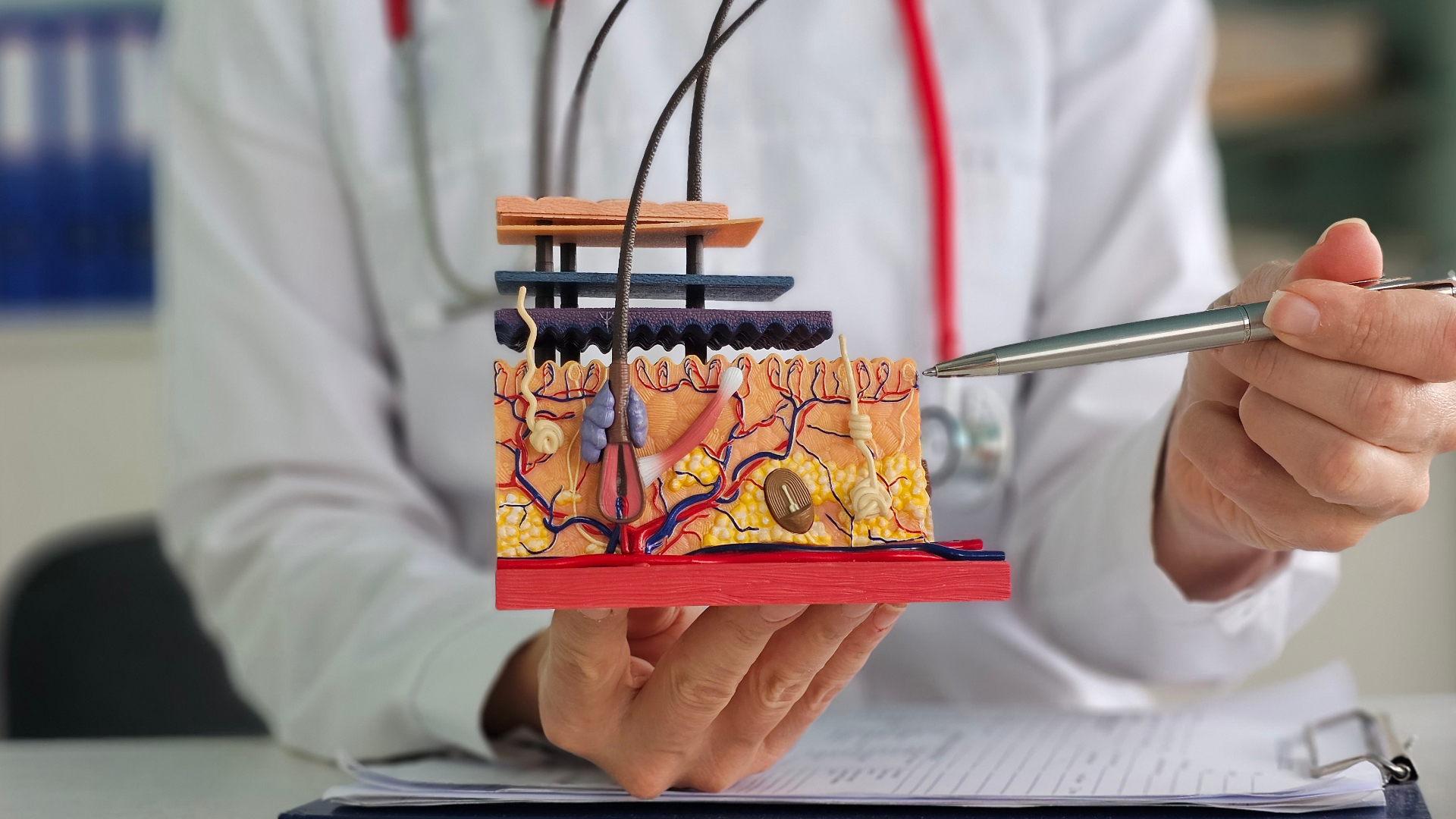
In men, this loss typically follows the pattern described in the Norwood scale, beginning at the temples and vertex. In women, it manifests more as diffuse thinning on the crown of the head, generally preserving the frontal hairline.
Telogen Effluvium: When Too Many Hairs Enter the Resting Phase
Telogen effluvium is characterised by massive and sudden hair loss, typically occurring 2 to 3 months after a triggering event. This delay is explained by the time needed for hair to pass through the different phases of the cycle. Many factors can cause this disruption: intense stress, surgery, high fever, childbirth, certain medications or a drastic diet. The hair cycle is then disturbed, leading to abnormal synchronisation that pushes a large number of follicles into the telogen phase simultaneously.
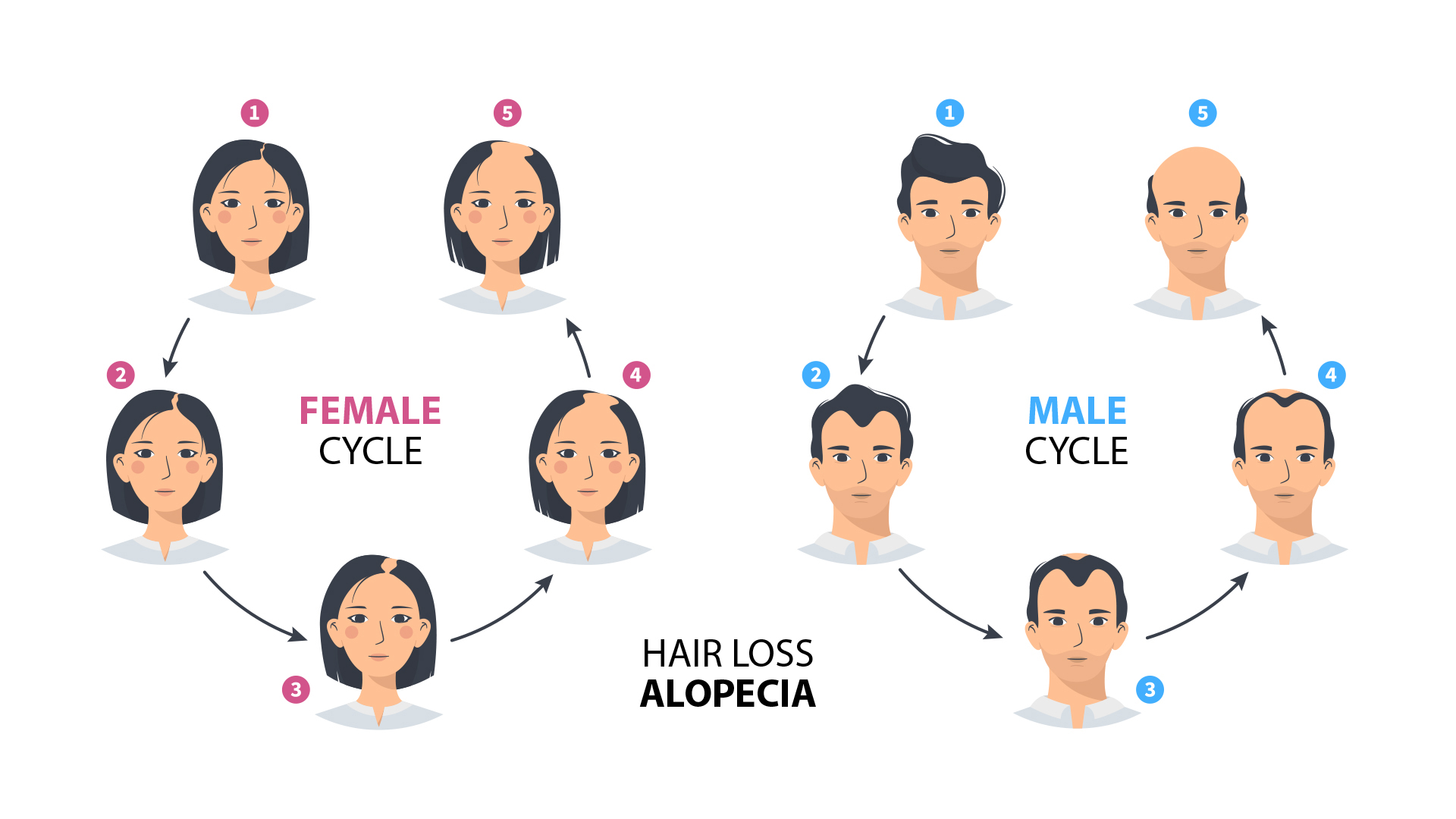
Fortunately, this form of shedding is generally temporary and reversible, with hair normally growing back once the cause is treated or eliminated.
Anagen Effluvium: The Abrupt Interruption of Growth
More rare, anagen effluvium occurs when the growth phase is abruptly interrupted. Anti-cancer chemotherapies are the most well-known cause: they target rapidly dividing cells, including those in the hair bulb. In this case, the shedding is rapid and massive, affecting up to 90% of hair within a few weeks. The good news is that the follicles are generally not destroyed, allowing regrowth once the treatment is completed.
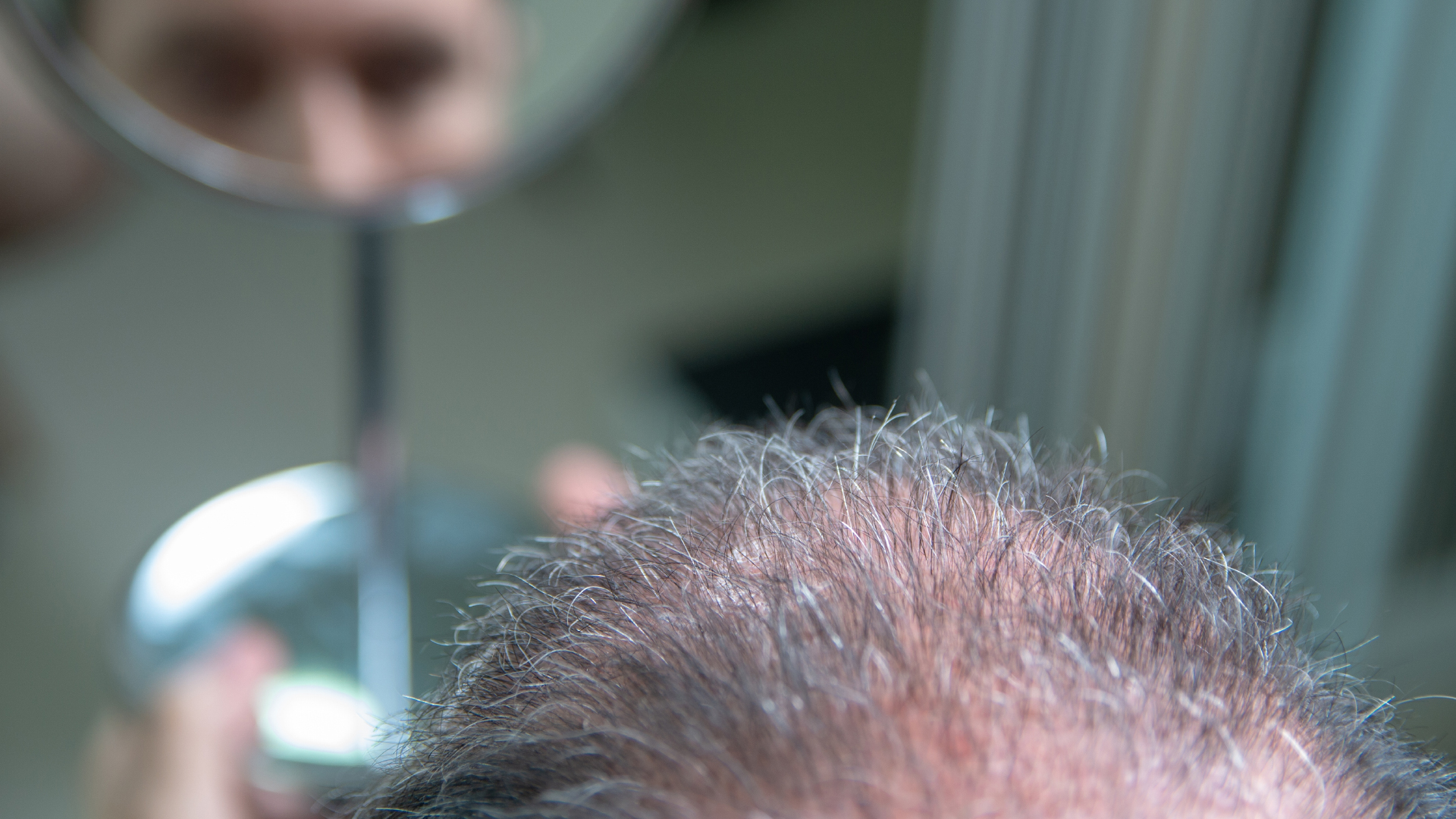
The Hair Growth Cycle and Hair Transplantation: A Close Relationship
Understanding the hair cycle is particularly important for anyone considering a hair transplant. This knowledge helps anticipate results and understand the different post-operative phases.
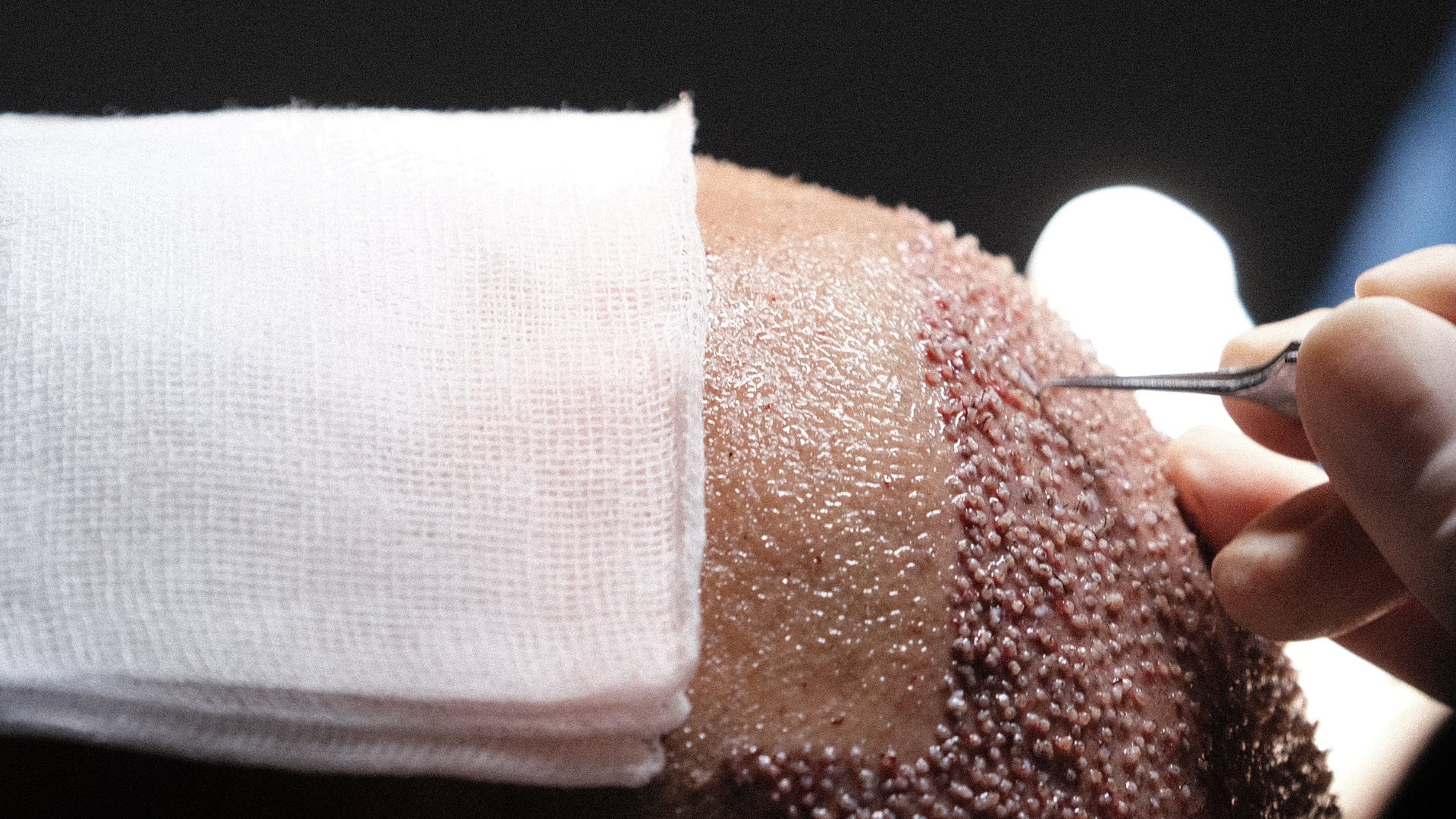
After a transplant, the transplanted hair follows a specific cycle. First, the implanted hair typically falls out within 2 to 4 weeks following the procedure – this is the famous shock loss. This shedding is normal and expected.
The transplanted follicles then enter a dormancy phase before beginning to produce new hair, generally 3 to 4 months after the operation. Full growth and definitive results are only visible after 12 to 18 months, the time needed for the hair to go through several complete cycles.
At Body Expert, this thorough understanding of the hair cycle guides all hair transplant procedures. Founded by Burak Engineri, himself a former patient who experienced baldness before benefiting from a successful transplant, the agency places great importance on educating its patients on this subject. This informative approach allows for realistic expectations and understanding of the importance of post-operative care to respect the natural cycle of transplanted hair.

Conclusion: Understanding to Better Act
The hair growth cycle is a fascinating biological mechanism that governs the life of each of our hair follicles. The daily loss of 50 to 100 hairs is perfectly normal and simply bears witness to the constant renewal of our hair.
However, excessive shedding or notable changes in your hair may signal an imbalance in the hair cycle that shouldn’t be neglected. If you notice abnormal loss, progressive thinning or areas that are becoming sparse, consult a specialist who can identify the cause and propose adapted solutions.
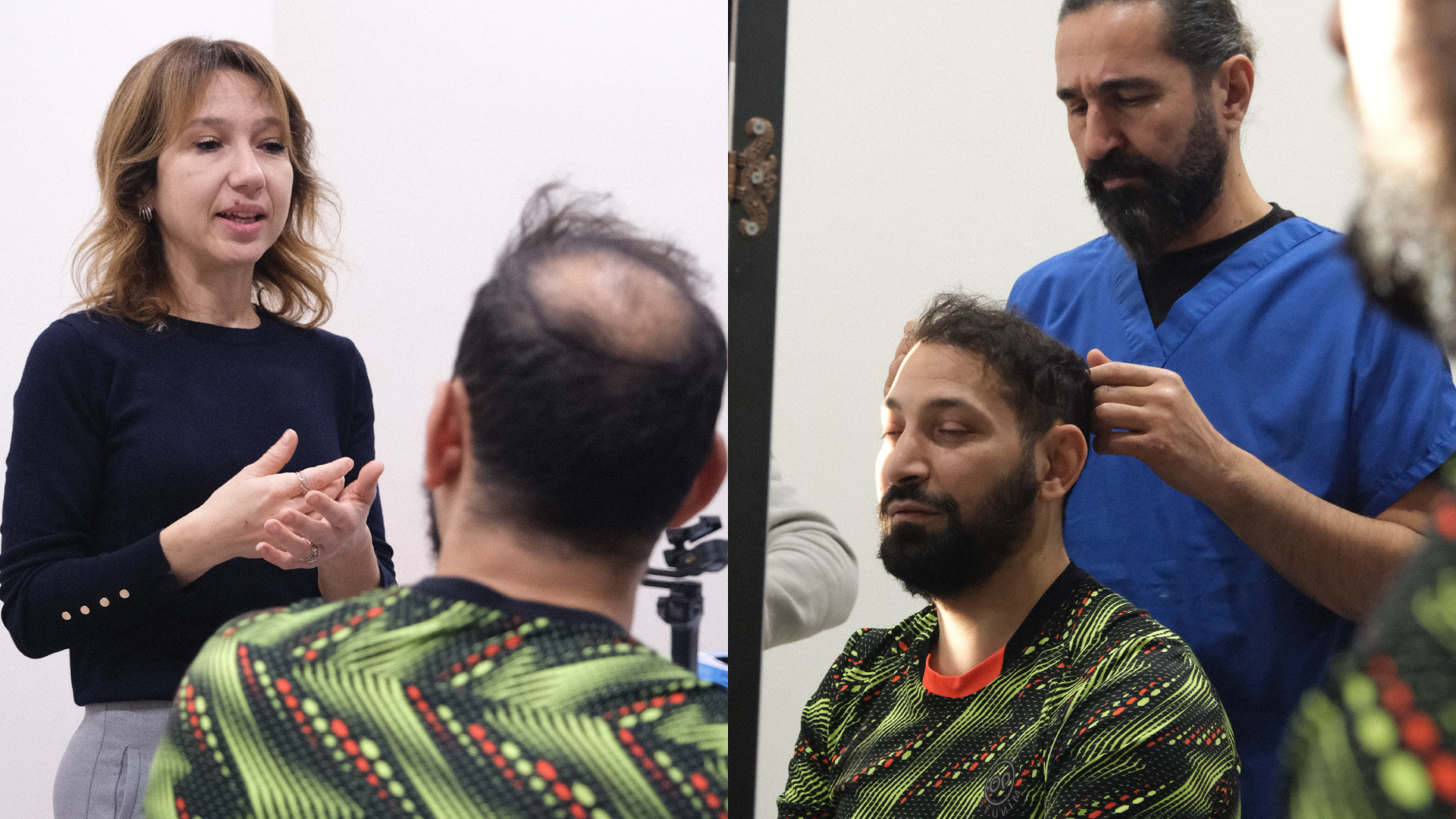
Whether you’re simply seeking to maintain the health of your hair or considering a hair transplant, knowledge of the hair cycle will allow you to make informed decisions and adopt the right daily habits.
Body Expert: Hair Expertise Born from Personal Experience
Body Expert is an agency specialising in medical tourism in Istanbul, founded by Burak Engineri, himself a former hair transplant patient. This personal experience inspired the creation of a different approach to medical tourism, centred on the human aspect and quality of care.
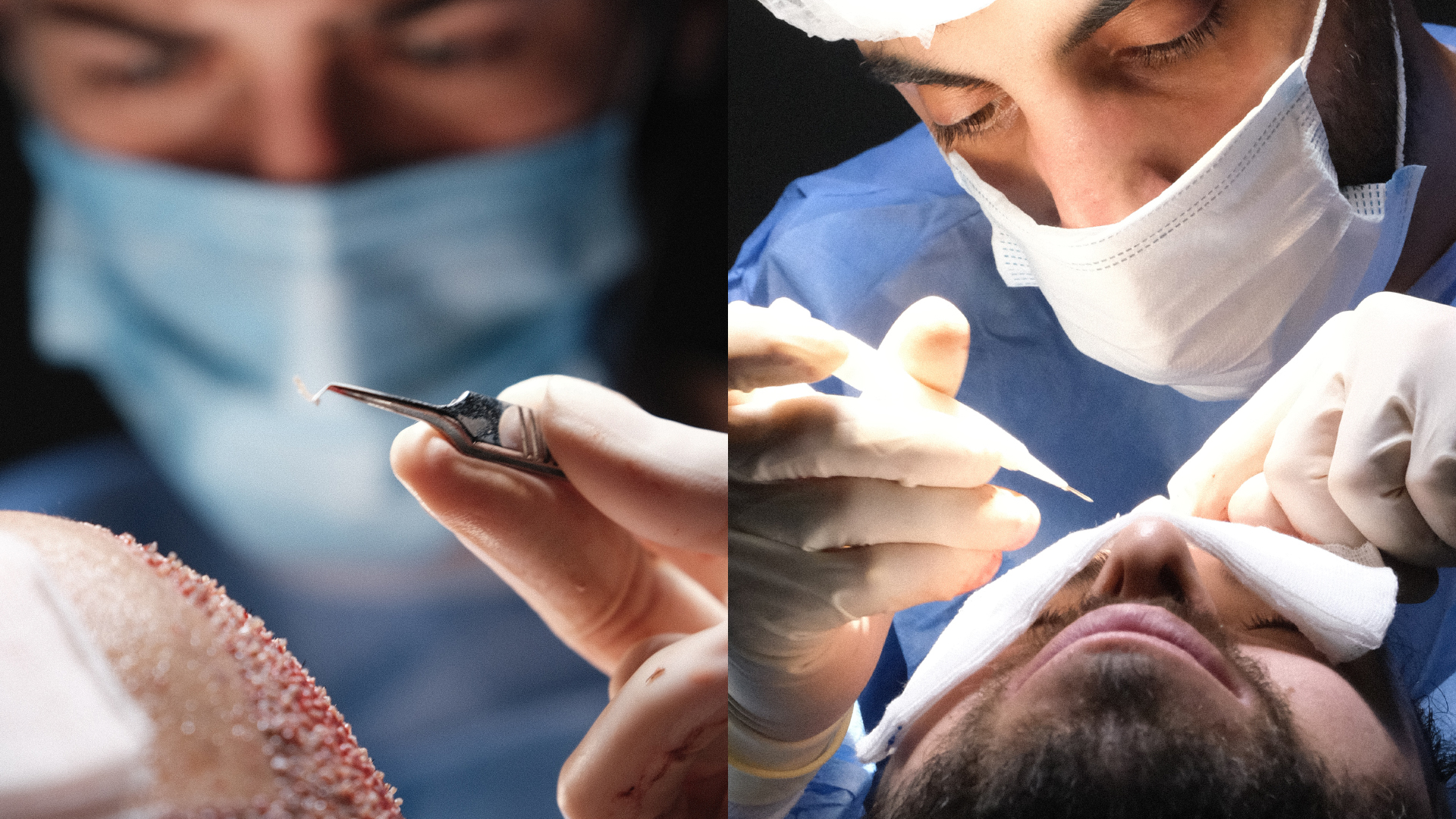
The agency rigorously selects its partner surgeons, all trained in the most advanced hair transplant techniques such as FUE, DHI or PRP treatment. Thanks to this expertise and the reduced costs of medicine in Turkey, Body Expert offers procedures 50 to 80% cheaper than in the UK or the US, without compromising on quality.
Each patient benefits from personalised English-speaking support, an all-inclusive package (transfers, accommodation, interpreter) and follow-up for up to 10 years after the procedure. This attention to detail and human approach explain why so many patients express their satisfaction after their hair transplant with Body Expert.
To learn more about the solutions offered to restore your hair while respecting the natural hair growth cycle, contact the experts for a personalised diagnosis.
Sources
Buffoli, B., Rinaldi, F., Labanca, M., Sorbellini, E., Trink, A., Guanziroli, E., Rezzani, R., & Rodella, L. F. (2014). The human hair: from anatomy to physiology. International Journal of Dermatology, 53(3), 331-341. https://doi.org/10.1111/ijd.12362
Hoover, E., Alhajj, M., & Flores, J. L. (2023). Physiology, Hair. In StatPearls. StatPearls Publishing. https://www.ncbi.nlm.nih.gov/books/NBK499948/
Martel, J. L., Miao, J. H., Badri, T., & Fakoya, A. O. (2024). Anatomy, Hair Follicle. In StatPearls. StatPearls Publishing. https://pubmed.ncbi.nlm.nih.gov/29261946/
Murphrey, M. B., Agarwal, S., & Zito, P. M. (2023). Anatomy, Hair. In StatPearls. StatPearls Publishing. https://pubmed.ncbi.nlm.nih.gov/30020684/
Paus, R., Ito, N., Takigawa, M., & Ito, T. (2003). The hair follicle and immune privilege. Journal of Investigative Dermatology Symposium Proceedings, 8(2), 188-194. https://doi.org/10.1046/j.1087-0024.2003.00807.x
3070 vues
0 commentaires
0


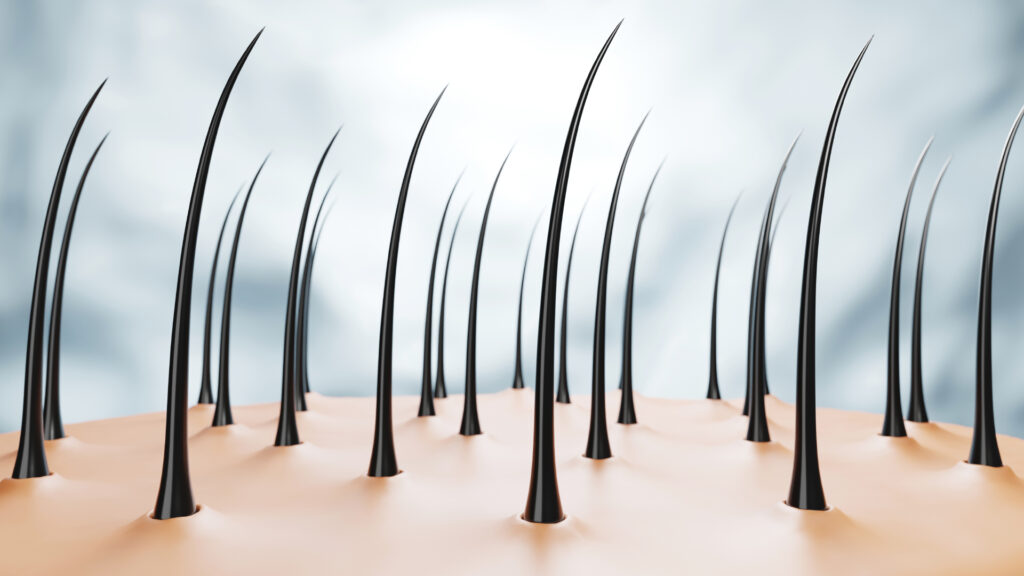
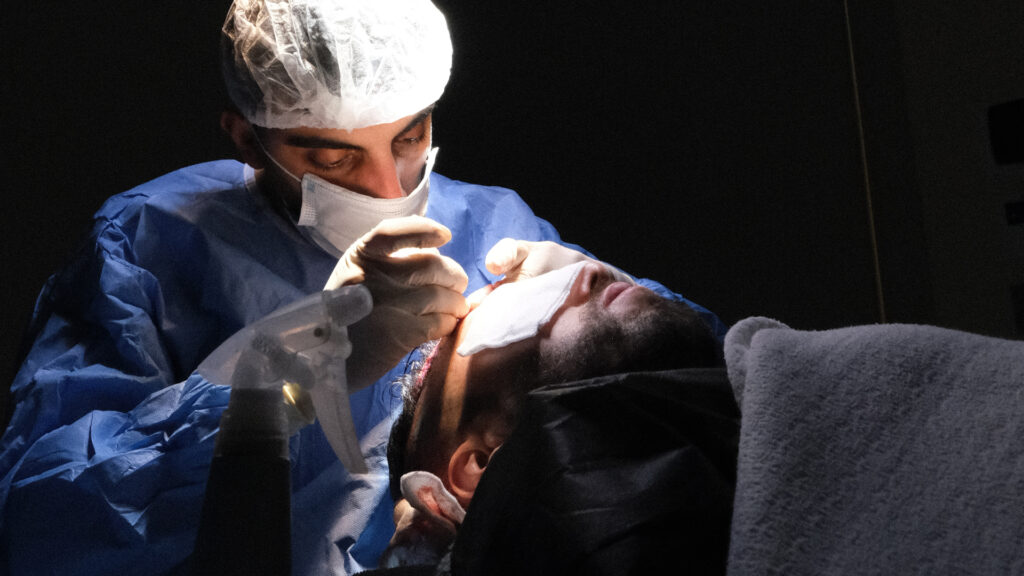
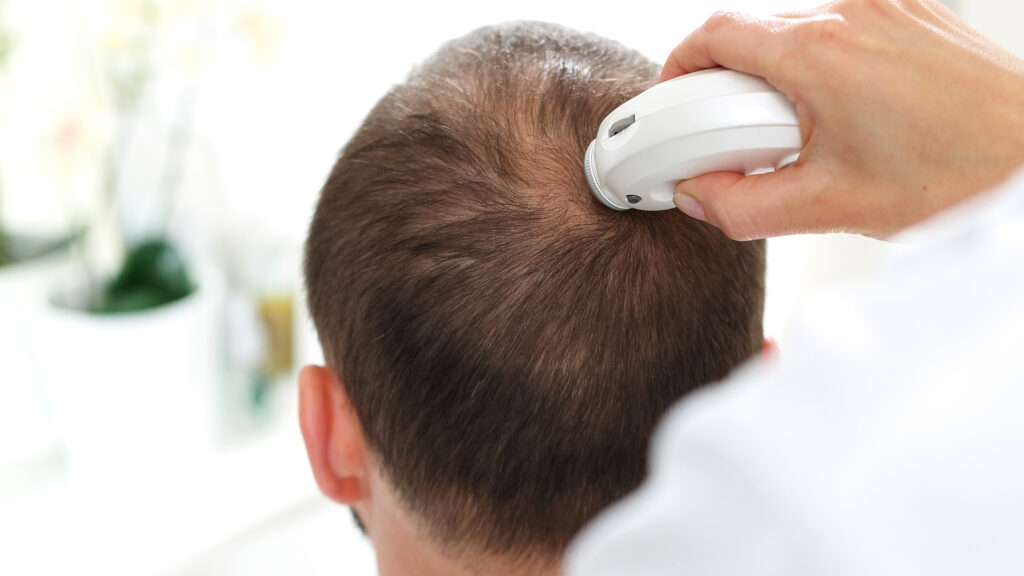

Il n'y a pas de commentaires pour le moment.